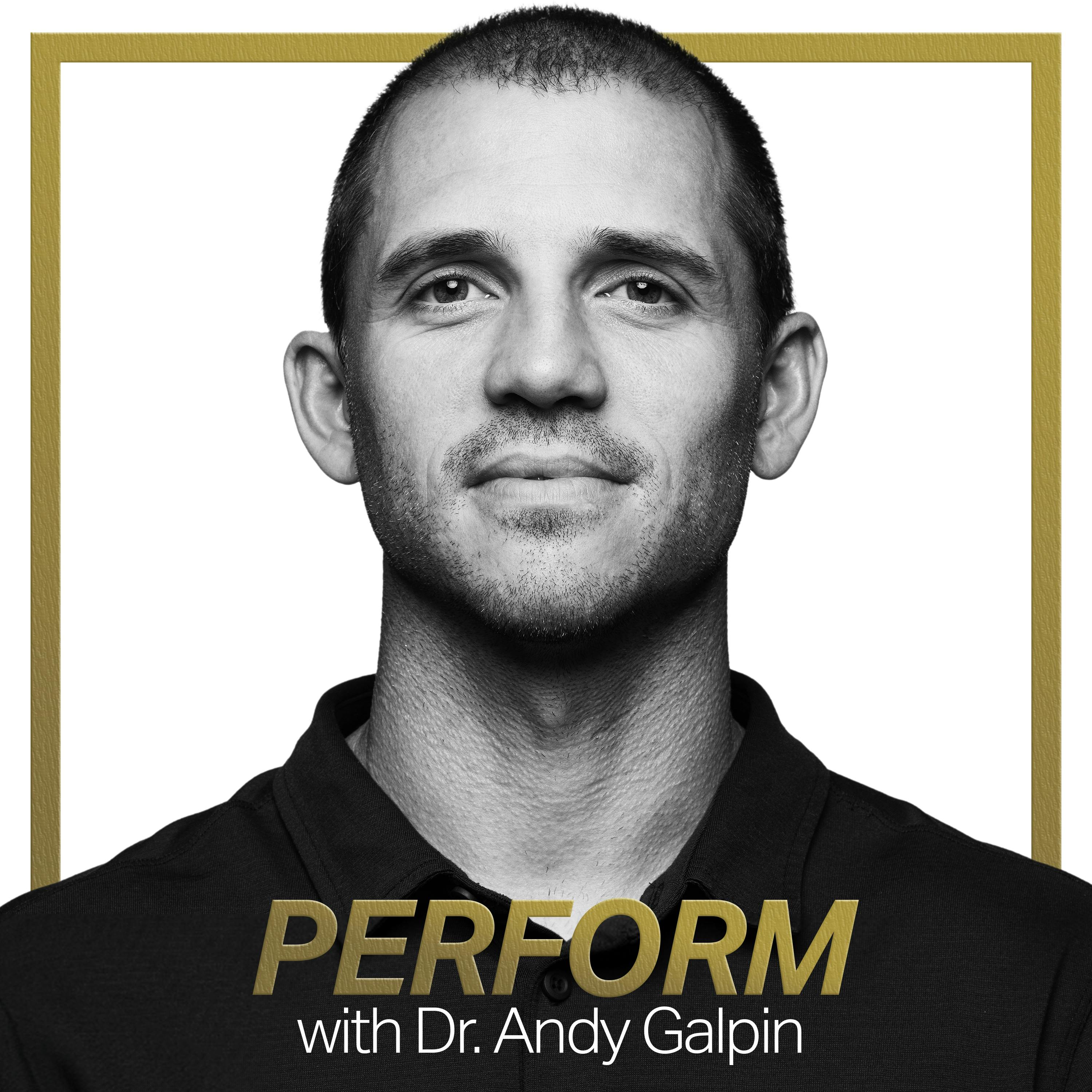
August 7, 2024 • 2hr 22min
How to Use & Interpret Blood Tests for High Performance
Perform with Dr. Andy Galpin

Key Takeaways
- Blood testing can provide valuable insights for optimizing athletic performance, but it's not necessary for everyone and has some limitations
- When interpreting blood test results, context is critical - factors like training phase, goals, and individual physiology must be considered
- Look at patterns across multiple related markers rather than focusing on single markers in isolation
- Reference ranges for "normal" values are often based on general population averages and may not be appropriate for athletes
- Some blood markers are very sensitive to acute changes (exercise, hydration, etc.) while others are more stable - understanding this is key for proper interpretation
- Creating categories of related markers (e.g. hydration, inflammation) provides more insight than looking at markers individually
- When addressing issues, focus on big lifestyle factors first before turning to specific supplements or interventions
- Blood test results should always be considered alongside symptoms, performance metrics, and overall health - don't treat the numbers in isolation
Introduction
In this episode, Dr. Andy Galpin provides a comprehensive overview of how to use blood testing to optimize athletic performance. He explains how performance-based blood testing differs from standard medical panels, discusses how to choose and interpret specific markers based on an athlete's goals and situation, and provides guidance on how to address issues identified through testing.
Dr. Galpin emphasizes that while blood testing can be a powerful tool, it's not necessary for everyone and has some limitations. The key is understanding how to properly collect samples, interpret results in context, and use the information to guide training and nutrition interventions.
Topics Discussed
Pros and Cons of Blood Testing for Performance (5:55)
Dr. Galpin starts by outlining some of the pros and cons of using blood testing for performance optimization:
Cons:
- Not necessary - many athletes succeed without it
- Can be expensive
- Many important factors can't be measured in blood
- Results are highly context-specific and can be misinterpreted
- Single snapshots may not reflect overall trends
- Hard to determine what's "normal" for an individual
Pros:
- Deep scientific evidence base for many markers
- Can help pinpoint specific physiological issues
- Provides objective data
- Allows tracking of trends over time
- Can differentiate between symptoms and root causes
Choosing the Right Markers (19:30)
Dr. Galpin explains that choosing which markers to test depends on the athlete's goals, sport, and situation. He recommends starting with standard panels like:
- Complete Blood Count (CBC) - provides info on red blood cells, white blood cells, and overall blood health
- Comprehensive Metabolic Panel (CMP) - assesses hydration, metabolism, kidney and liver function
Beyond these basics, markers should be selected based on the specific areas of interest. For example:
- For a bodybuilder focused on muscle growth, emphasize protein turnover markers like albumin, globulin, BUN, etc.
- For an endurance athlete, focus more on markers related to iron status, red blood cells, etc.
Getting Good Data (1:05:18)
To ensure blood test results are valid and useful, Dr. Galpin recommends:
- Standardize pre-test conditions - avoid hard exercise, alcohol, supplements, etc. for 48 hours prior
- Fast for 12 hours before the test
- Be adequately hydrated
- Get tested at the same time of day each time for consistency
- Use the same lab company for all tests if possible
Interpreting Results (1:19:41)
Dr. Galpin emphasizes several key points for properly interpreting blood test results:
- Consider context - training phase, goals, symptoms, etc. all impact interpretation
- Don't rely on standard reference ranges - these are often based on general population averages and may not apply to athletes
- Look at patterns across multiple related markers rather than focusing on single markers in isolation
- Understand which markers are sensitive vs. resilient to acute changes
- Create categories of related markers (hydration, inflammation, etc.) to get a more complete picture
Analytical, Diurnal & Biological Variability (1:56:35)
Dr. Galpin explains that blood test results have inherent variability due to several factors:
- Analytical variability - imprecision in the testing process itself (usually <5%)
- Diurnal variability - natural fluctuations throughout the day
- Biological variability - natural day-to-day fluctuations
Understanding this variability is crucial for determining if changes between tests are meaningful or just normal fluctuation. Dr. Galpin recommends using online calculators to account for this variability when comparing results.
Patterns & Categories (2:01:39)
Dr. Galpin emphasizes the importance of looking at patterns across related markers rather than focusing on single markers in isolation. He recommends creating categories like:
- Hydration - hematocrit, BUN, albumin, serum osmolarity
- Inflammation - CRP, ESR, albumin, vitamin D
- Energy production - blood glucose, HbA1c, fructosamine
Looking at these categories provides a more complete picture than any single marker alone.
Intervention Strategies (2:09:01)
When addressing issues identified through blood testing, Dr. Galpin recommends:
- Start with big lifestyle factors first - sleep, stress, nutrition, etc.
- Consider if the issue requires a direct or systemic solution
- Address the most severe issues first - often resolves other minor issues
- Don't overreact to single test results - look for consistent patterns over time
He provides a case study example of how low testosterone was resolved by addressing underlying sleep and nutrition issues rather than directly supplementing testosterone.
Conclusion
Dr. Galpin concludes by emphasizing that while blood testing can be a powerful tool for optimizing athletic performance, it must be used properly to be effective. Key points include:
- Carefully selecting appropriate markers based on the athlete's goals and situation
- Standardizing pre-test conditions to ensure valid results
- Interpreting results in proper context, not just based on reference ranges
- Looking at patterns across related markers rather than single markers in isolation
- Addressing underlying lifestyle factors first before turning to specific interventions
He notes that the field is complex and constantly evolving, so it's important to stay open to new research and be willing to modify approaches as new information emerges. Overall, blood testing can provide valuable insights when used properly as part of a comprehensive approach to optimizing athletic performance.



